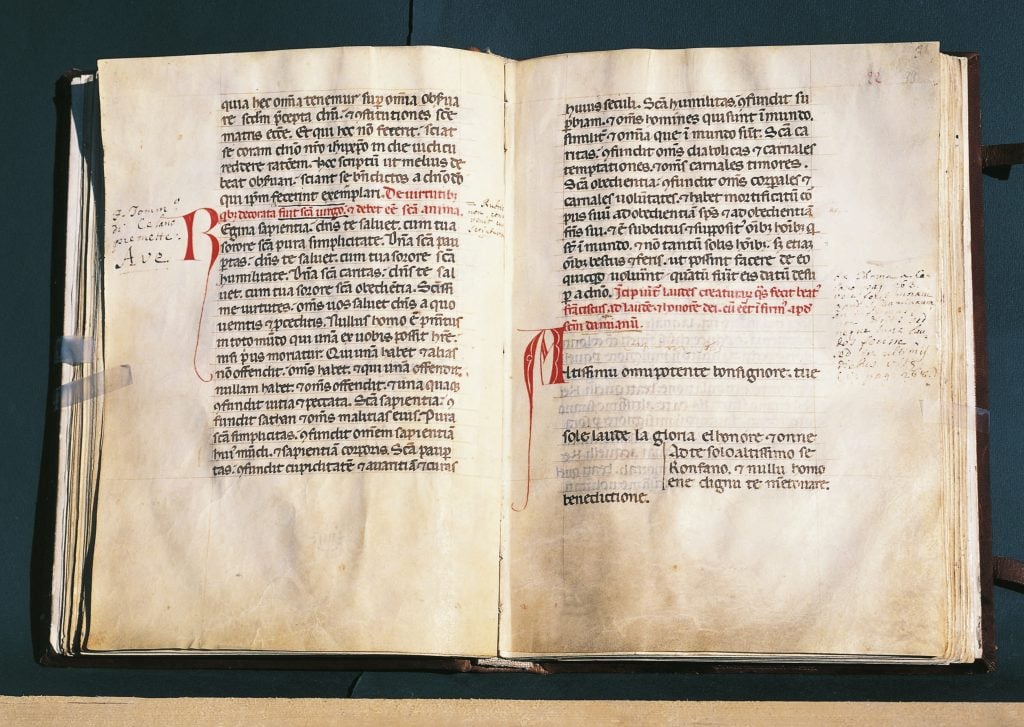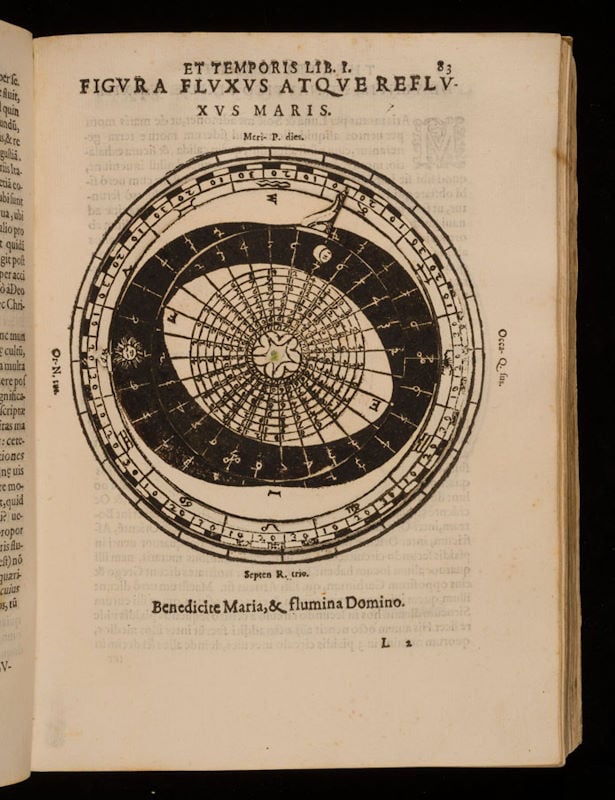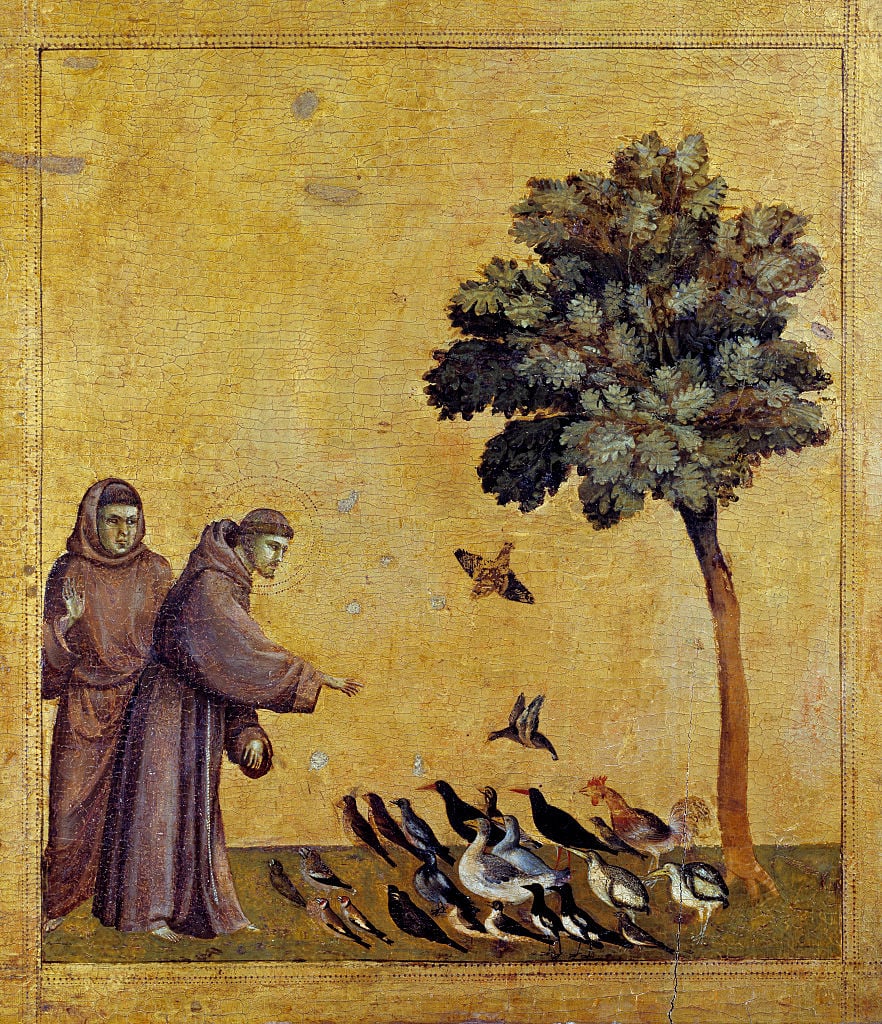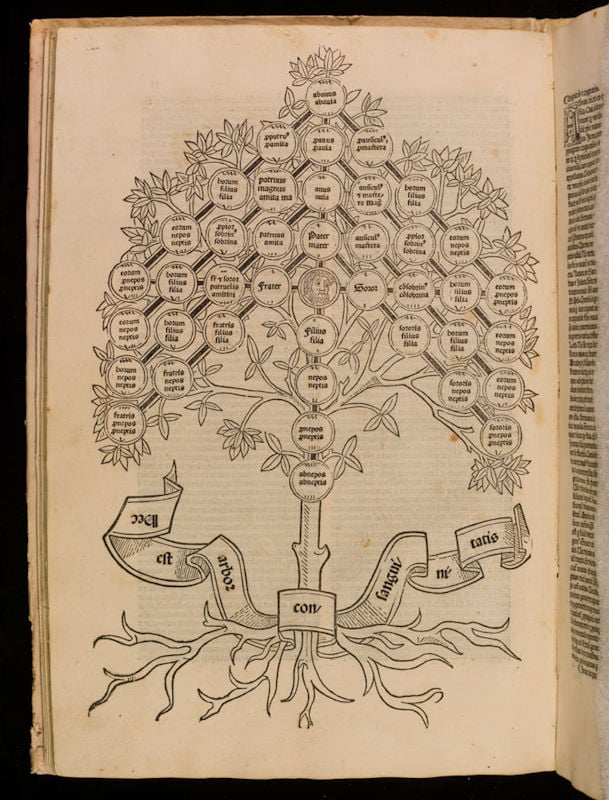Art & Exhibitions
Famed 800-Year-Old Hymn by St. Francis of Assisi Gets a Rare Outing in Rome
The canticle is one of the oldest works of the Italian literary canon with a known author.

Around 1224 C.E., while recovering from an illness, St. Francis of Assisi penned one of the most celebrated hymns in the Christian faith. In “Canticle of the Creatures,” the founder of the Franciscan Order gave praise to all of god’s creation in a lyrical form that would go on to inspire composers Franz Liszt and Howard Blake, who wrote settings for it, and poet Robert Lax who wrote a tribute to it. Today, the famed hymn represents one of the oldest works of the Italian literary canon with a known author.
Some eight centuries after St. Francis composed “Creatures,” the manuscript of the beloved canticle is making its first appearance in Rome at the exhibition “Laudato Sie! Nature and Science. The Cultural Legacy of Brother Francis.” Hosted by the Museum of Rome, the show centers on the canticle, which will be on view alongside more than 90 other books and manuscripts from the Sacred Convent’s Ancient Collection of the Municipal Library of Assisi, located in the Umbrian city where Francis was born.

Giovanni Paolo Gallucci – Theatrum mundi et temporis Venice 1588. Photo: Museo di Roma.
“Centuries later and in a profoundly changed cultural context, it is still possible to draw lessons from the experience of Francis and his followers, which indeed resonates in a particularly significant way in an era in which the issues of the environment and sustainability have forcefully returned to the center of public debate,” said the city’s mayor Roberto Gualtieri in a statement. “Recovering that sense of empathic admiration for a world that we too often take for granted is now more necessary than ever, and in this the exhibition represents an opportunity from which we hope each of us can find fertile inspiration.”
One of the most important saints in the Roman Catholic faith and indeed Christianity in general, St. Francis was born Giovanni di Pietro di Bernardone around 1181 C.E. Stories of his life follow a familiar hagiographic format. Born into a rich family, he abandoned his inherited wealth and power after experiencing a spiritual awakening and began life anew as a beggar, friar, and, following his canonization by Pope Gregory IX in 1228, saint.

Giotto di Bondone, Saint Francis of Assisi (San Francesco) preaching to the birds, detail of the predella of St Francis of Assisi receiving the Stigmata. Photo by Leemage/Corbis via Getty Images.
Like countless other Christian icons, Francis welcomed poverty and suffering— qualities that not just allowed him to directly identify with the persecuted and downtrodden figure of Christ, but also compelled him to treat others with kindness and respect, uncorrupted by the influence of material possessions. His love-centered interpretation of Christianity sharply contrasted with the dogmatism of the church, foreshadowing everything from the Protestant Reformation to the theological writings of Russian author Leo Tolstoy.
Manuscript showing St. Francis of Assisi’s “Canticle of the Creatures.” Photo: Museo di Roma.
This way of thinking is prominently displayed in St. Francis’ hymn “Canticle of the Creatures,” which was written in his native Umbrian dialect before being translated into other languages such as Latin. The hymn reiterates values its author demonstrated through his saintly lifestyle, notably his appreciation for all living and non-living things. “Praised be You, my Lord,” one of its verses reads, “with all Your creatures, especially Sir Brother Sun, Who is the day and through whom You give us light.”
Fittingly, perhaps, the hymn was sung to Francis as he lay on his deathbed.

The Franciscans and Encyclopedic Knowledge – Isador of Seville Etymologiarum opus Venice 1483. Photo: Museo di Roma.
Those visiting “Laudato Sie!” will be able to admire the oldest known copy of “Canticle of the Creatures,” as well as an immersive space that brings to life the hymn’s religious sentiment and vision of nature. Another immersive experience, which bookends the exhibition, puts viewers in touch with more projections of flora and fauna, described by the museum as “an ‘integral’ vision of the world.”
In between those rooms, the show offers views of relics including the Universal Sacred-Profane Library, an incomplete encyclopedia from the early 18th century compiled by the Franciscan friar Vincenzo Maria Coronelli, and “De Sphaera mundi” or “On the Sphere of the World,” a treatise on pre-Copernican astronomy written by the monk Johannes de Sacrobosco around 1230 C.E.
“Laudato Sie! Nature and Science. The Cultural Legacy of Brother Francis” is on view at the Museum of Rome, Piazza San Pantaleo, 10, Piazza Navona, 2, Rome





